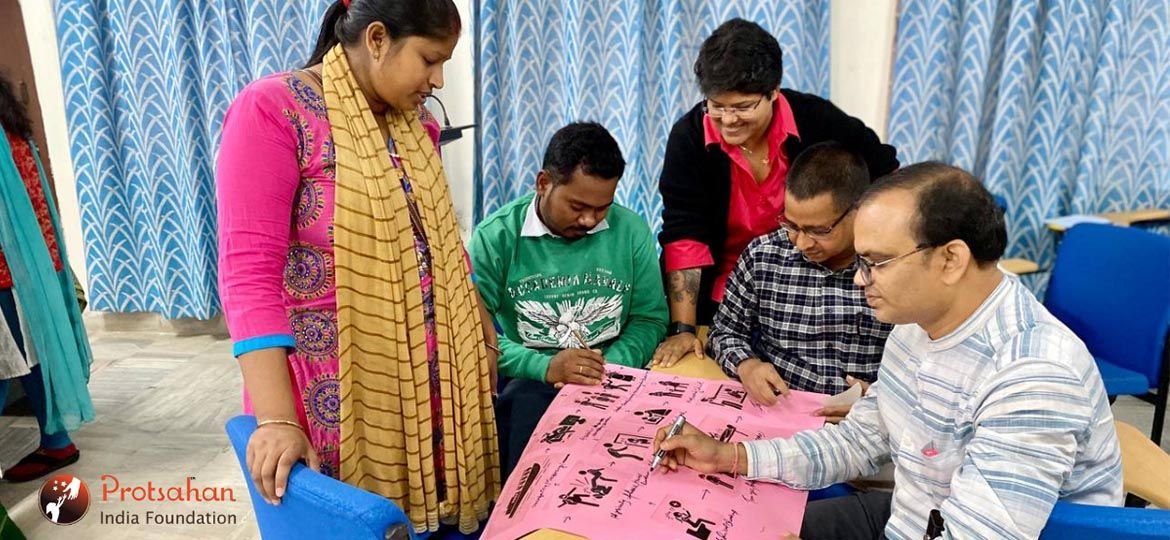
Author: Sonal Kapoor
Touching down at the Birsa Munda airport in the last weeks of November 2023, we felt the pulse of Jharkhand’s tribal heart reverberate through the construction on dusty yet artful vibrant roads, a symphony of resilience and hope eagerly seeking development. Our journey led us to the State Institute of Rural Development (SIRD) Jharkhand, where Protsahan’s commitment to child protection and our role as a master trainer converged in a transformative four-day Training of Trainers (ToT) program. This blog unwraps the layers of this immersive experience, offering a glimpse into the profound insights gained in the pursuit of strengthening the child care ecosystem in the tribal heartland of.
Understanding Jharkhand’s Tribal Fabric
In 2000, after a prolonged battle fought by Adivasis and Scheduled Tribes, Jharkhand emerged as a state, a homeland for tribal communities. Previously a part of Bihar (until 2000), Jharkhand is located in the Eastern part of India. It is the fifteenth largest state in the country and shares its borders with Odisha, West Bengal, Chhattisgarh, Uttar Pradesh, and Bihar. Some of the major cities in the state include Ranchi, which is the capital, Dumka, the sub-capital, and Jamshedpur, Hazaribagh, Dhanbad, and Bokaro. Hosting around 32 tribal groups, including eight Primitive Tribal Groups (PTG), the state grapples with unique challenges. The Particularly Vulnerable Tribal Groups (PVTG) face hardships such as a lack of Aadhaar benefits, poor living conditions, food insecurity, and limited access to education. As we stepped onto the SIRD campus, surrounded by tribal hutments, the stage was set for a training program aimed at bridging the psychosocial child protection gap – an initiative seeded with a collaborative effort by Unicef Jharkhand and National University of Study and Research in Law (NUSRL), Ranchi.
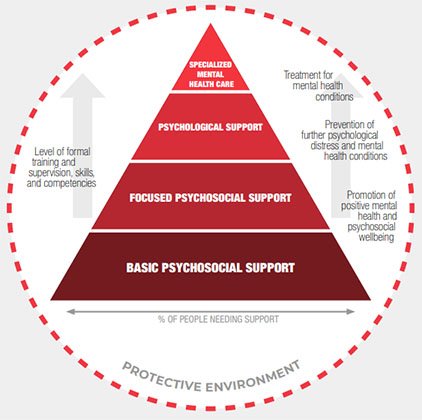
The Crucial Training Modules
Rooted in Protsahan’s HEART model, the four-day program addressed the growing need for expertise in child-centric mental health and social safety. From child-friendly spaces & ground zero framing of childhood trauma to child rights and mental health and psychosocial support (MHPSS) intersection, each Protsahan module employed interactive workshops, group discussions, and case study-based analyses. The objective was clear – to arm participants with the insights and tools necessary to make a profound impact on the well-being of vulnerable children within tribal communities.
Participants and Local Inspirations
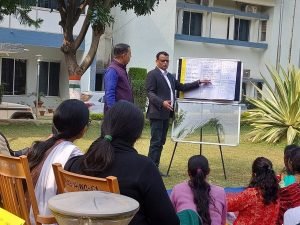 A diverse group of participants, including district child protection officers, education officials, doctors from Ranchi Institute of Neuro-Psychiatry & Allied Sciences (RINPAS), social workers, and educators, converged for this immersive experience. This training was meant for national including block, district and village level workforce across departments. The participants came from a variety of professional and para-professional fields serving the child protection services ecosystem. Just as the medical profession consists of doctors, nurses, physical therapists, and technicians, the child protection service workforce comprises many cadres of people with various titles, roles and functions from education, health and panchayats, but they all share a common goal – to care, support, promote and empower vulnerable children. Over the four days, we had the privilege of meeting fascinating young men and women who shared tales of their cultural hero, Birsa Munda and why what they do resonates so much with Birsa’s life and values. The legacy of Birsa Munda, a leader who led tribal peasants to prevent land grabbing, still echoes in the region even during workforce .
A diverse group of participants, including district child protection officers, education officials, doctors from Ranchi Institute of Neuro-Psychiatry & Allied Sciences (RINPAS), social workers, and educators, converged for this immersive experience. This training was meant for national including block, district and village level workforce across departments. The participants came from a variety of professional and para-professional fields serving the child protection services ecosystem. Just as the medical profession consists of doctors, nurses, physical therapists, and technicians, the child protection service workforce comprises many cadres of people with various titles, roles and functions from education, health and panchayats, but they all share a common goal – to care, support, promote and empower vulnerable children. Over the four days, we had the privilege of meeting fascinating young men and women who shared tales of their cultural hero, Birsa Munda and why what they do resonates so much with Birsa’s life and values. The legacy of Birsa Munda, a leader who led tribal peasants to prevent land grabbing, still echoes in the region even during workforce .
Stories of Resilience and Innovation
Beyond a professional engagement, the training unfolded as a journey into the lives of the people of Jharkhand for our team. “I have traveled a 360 km journey on bus to attend this training, leaving my children in care of my parents for 4 days,” noted a young woman participant showcasing remarkable determination. While we were offered red ant chutney, a local delicacy, characteristic of the warmth and hospitality of the community, we also deeply understood the meaning and need of this training for the participants. Women attending with infants and men emerging as gender advocates showcased a commitment to the training despite infrastructural challenges. “A truly eye-opening experience! The workshop broadened my perspective on child protection strategies and provided practical tools that I can implement in my district.” – Ritesh, District Child Protection Officer.
Outcomes of Protsahan’s Child Protection Training

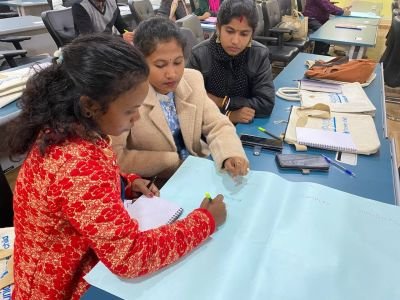
As the wheels of development continue to turn, Protsahan’s HEART model resonates, embracing the power of art, cinema, and technology to uplift and empower those most in need. The innovative approaches discussed in the training, combined with the rich cultural heritage of Jharkhand, created a powerful synergy for sustainable change.
“Attending this training was a game-changer! The discussions on cultural sensitivity and trauma-informed approaches reshaped my understanding of working with tribal children. Videos were very powerful. Main waapis jaake inhe istemaal karungi.” – Pinki, Panchayat Leader, PVTG.
A diverse range of instructional methods, including focused group discussions, group exercises, audio-visual presentations, peer learning activities, experience sharing, and case studies-based discussions, were employed to deliver the training. The outcomes were as follows:
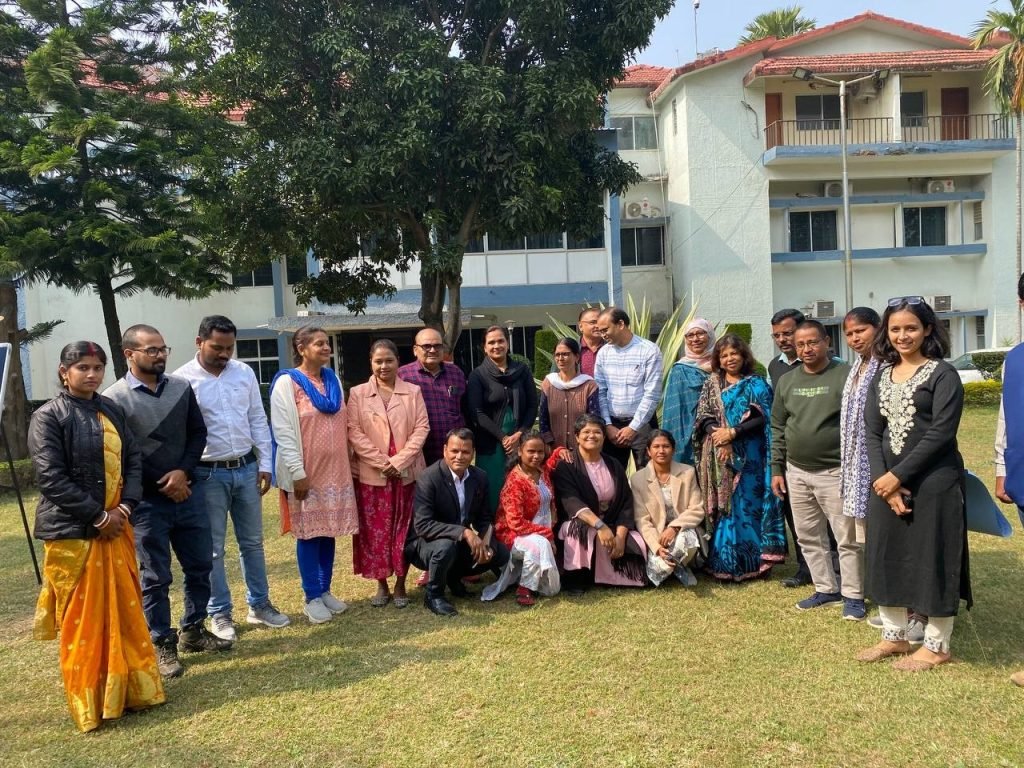
- Increased ability to identify and address child mental health challenges effectively.
- Improved implementation of child-centric mental health programs in various settings.
- Enhanced community engagement, advocating for child rights, online safety, and overall well-being.
In the heart of Jharkhand’s tribal landscape, the SIRD child protection training became a nexus of knowledge, passion, and commitment for the changemakers. The insights gained, the stories heard, and the connections forged reinforced the belief in the transformative power of education, innovation, and community engagement. We had powerful conversations with vibrant teachers working on inculcating socio-emotional learning and gender lenses within school textbooks and we exchanged ideas on how the HEART methodology can be used to strengthen these learnings on childhood development. As we draw on our 14 years of work on the ground navigating the complex terrain of child protection, the experiences in Jharkhand serve as a guiding light for us as to build further this trajectory. We’re envisioning the path towards a future where every child, regardless of their background, can thrive and fulfill their potential. Together, let’s weave a culture of empowerment and hope for Jharkhand’s tribal children.

